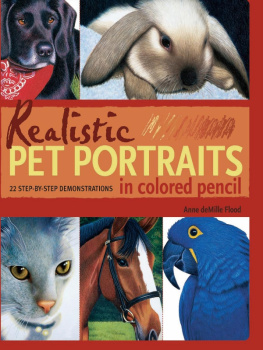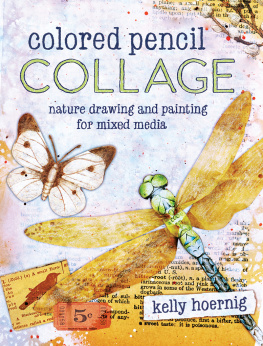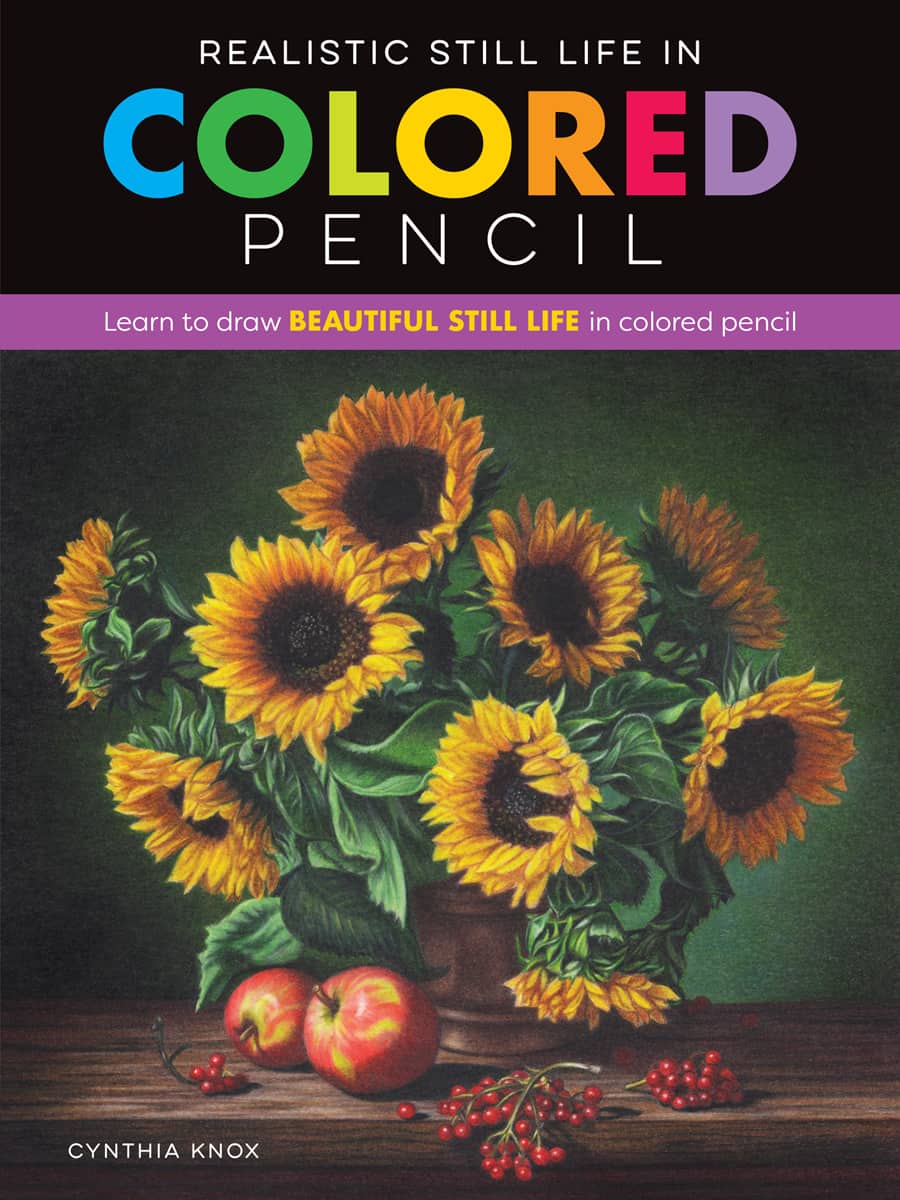REALISTIC STILL LIFE IN
COLORED
PENCIL
CYNTHIA KNOX

Introduction
Just do it. A dear friend encouraged me to take the next step in my art journey. I had been drawing with graphite pencils and felt comfortable in my world of gray, but I knew that there was more out there. I decided to transition into all things color but didnt know where to startso I procrastinated. Have you ever done this? You want to move forward into something exciting that holds promise, but you feel a bit stuck? My friend motivated me to leave my doubts behind and embrace color, and I turned to the colored-pencil medium to do just that. I was particularly attracted to still-life compositions, and thats when it all came together for me.
My new goal was to learn the painterly technique of colored pencil and create beautiful still-life artwork with an emphasis on vivid color and extreme detail. Several artists became my mentors via their books, workshops, online classes, and personal instruction, and Im truly grateful for them and the techniques they shared. They have inspired me to teach my own techniques and show people how much fun colored pencils can be.
Over time, my artistic style has evolved and it now leans toward realism with vibrant colors, a variety of textures, and smoothly blurred backgrounds. I love a challenge, and many still-life subjects certainly present one.
In this book, well work together to create beautiful flowers and fruit, elegant antiques, intricate lace, tinted glass, delectable pastries, and so much more. Join me as I show you how to create your own personal masterpieces step by step throughout the pages of this book. Your friends and family will exclaim, Thats colored pencil?! when you show them your work, and youll be amazed at how quickly it all comes together for you. Now lets get started!
Tools & Materials
Colored-pencil artwork is affordable to create and requires only a few supplies. However, I strongly recommend that you purchase the best-quality materials possible. This is particularly important with pencils and paper. Invest in the good stuff, and your artwork will last for many years after you create it.

COLORED PENCILS
To create beautiful pieces of art, I recommend purchasing professional-grade colored pencils. These are a step up from student-grade pencils. A few leaders in the industry include Prismacolor, Faber-Castell, Derwent, and Caran dAche. Their pencils are sold in sets as well as individually online and in stores in most countries.
Quality professional colored pencils have thin cores of pigment within their casings. These cores are wax- or oil-based, or water-soluble with watercolor effects. I recommend that you try a few pencils of each type to see what appeals most to you. It is possible to combine pencil types, and when using oil- and wax-based pencils together, its best to use oil-based pencils first with foundational layers of wax-based pigment applied over that. Either may be used effectively over a water-soluble foundation.

WAX-BASED PENCILS are extremely creamy, and I love working with them. They deliver pigment to the paper surface with smooth consistency and are easy to layer and blend. Their pencil points are somewhat soft and prone to breakage; however, with the right touch and application angle, breakage is minimal. A good pencil sharpener also reduces the possibility of breakage. If waxy buildup occurs, you can easily remove it with the sweep of a tissue or clean cloth. A fixative spray prevents the recurrence of waxy buildup.
OIL-BASED PENCILS also deliver pigment smoothly, but they are not quite as creamy as wax-based pencils. They produce generous color with very little breakage and lay down pigment nicely, especially if used with a light touch. There is no wax buildup and little pencil debris. They sharpen well and last longer than wax-based pencils.
WATER-SOLUBLE PENCILS are essentially watercolor pencils that can be used wet or dry with impressive results. Many artists will create a watercolor base with these pencils, and then add dry detail with them. Backgrounds and foundational color for subjects can be accomplished quickly with water-soluble pencils.
STABILOALL pencils are water-soluble, and the Black and White ones have become staples in my artwork. The Black pencil yields extremely dark black pigment and becomes even blacker with the addition of water. When used with water and a small paintbrush, the White pencil enables me to paint bright highlights over my colored pencil layers.
Something to consider with your choice of colored pencil brand is its lightfast rating. This indicates how pigment may fade or change its hue over time when exposed to light. A pigment that is lightfast resists fading.
SURFACES
Colored-pencil artists work on everything from smooth white paper to grainy wood to create their works of art. There is a great deal of surface variety to choose from, and Ill briefly touch on the characteristics of a few favorites.
Paper textures are identified by their tooth and are primarily considered hot pressed or cold pressed based on how they are made. Tooth describes the little hills, valleys, and ridges that can be felt when you slide your finger across the surface.
HOT-PRESSED PAPER has very little tooth and a smooth texture. Strathmore smooth Bristol paper is a hot-pressed paper and my personal favorite due to its sleek texture. Vellum Bristol has a bit more tooth and is also popular with colored-pencil artists.
COLD-PRESSED PAPER has more tooth and a discernible texture. Artists using water-soluble pencils enjoy cold-pressed paper for its ability to deposit pigment nicely within the variegated surface of the paper. Use light pencil pressure to convey a drawn look or firm pressure to flatten and depress the tooth and create a painted look. More paper tooth generally enables you to apply additional layers of pencil.
When working with paper, make sure to check out the brands archival qualities. Archival paper is higher quality, durable, and acid-free, and it will stand the test of time. This is especially important if you are creating keepsake pieces or selling your artwork to clients.
Stonehenge paper is popular among many artists because of its smooth texture, affordability, and excellent archival properties. It can receive many layers of pencil.
Many artists today enjoy drafting film as a surface. Not only does its smooth texture offer luxurious pigment application, but both sides can be used for a more enhanced appearance to the artwork.










